
“All this going around is not aggression; if you want to see aggression on a cricket field, look into Rahul Dravid’s eyes.”
Now, I don’t know for sure if the big, booming Matthew Hayden really said these words or not and frankly, I don’t care. This, for the simple fact that my adulation for Rahul Dravid won’t drop a bit if Haydos (insert any other cricketer of international repute) had not said so about him.
Having gulped down numerous videos and articles about Jam, I know that according to this ‘humble beast’, the best praise is the one that comes from the dressing room and the best ambience is a cheerful dressing room after a thoroughly grilling day with the wily seductress that is Test Cricket.
Dravid’s gameplay did not trigger love at first sight. Like the old-school approach to his batting, the liking to Dravid too is old school.
It starts with a team in trouble, a beautiful stance, a great technique, the bat that goes up and down three times as the bowler runs in, the sweat that drips from the brow and the sweet sound of his forward defence coaxing the ball to die immediately at his feet. The runs eventually come, gaps pierced with a surgical precision. The boundaries start coming in soon, hardly a slog and all the goodness of the textbook rules intact.
Not bad for a blocker
It is almost funny in a way, when you think of the money shots of the legendary batsman of the past.
For example, the sight of Sir Viv sauntering out to bat while chewing gum is my money shot; with Sachin it is the straight on-drive and the perfect display of the sponsor’s logo; Punter had his pull, while with Lara, it was that fierce drive through the off side.
Not to say that these players weren’t defensively strong, just that the lasting image these guys have left on their mortal subjects is of these respective signature shots.
Now, this is where things get interesting, paint a mental picture of Dravid. What comes to mind? Bingo, the rock-solid defence. Yes, the square cut was special but I am sure that won’t be the first thing that comes to mind.
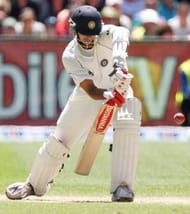
Also, there is a specific reason that I mentioned the likes of Ponting and Sachin earlier and here is why.
Test Cricket, who doesn’t love it? The purest form of the game (you get the idea). Take a look at the top 6 run scorers.

Is Dravid ‘the’ odd one out here?
No, he sits rightfully where he belongs. In a list largely dominated by stroke makers, he finds his own place. I am sure, like his responses to many rapid-fire questions, he would have said with his trademark humility, “Not bad for a blocker eh!”
In a game where players make their mark and get the most out of the game, Dravid gave something back to it.
Dravid’s batting was like a time machine. My father's generation saw (okay, mostly heard on the radio) about Gundappa Viswanath’s square drive, and the technical proficiency of Dravid on the same shot took us back to the 70s. Dravid was an analog player in the digital era.
Numbers don’t lie
We know the genius of Dravid as we know the toil and turmoil of him being dropped from the side in 1998. Never an automatic choice in ODI teams during his early years, he still emerged as the highest run-scorer in the 1999 ICC Cricket World Cup, where the Duke ball swung a mile. I can’t think of a better sucker punch than this.

95 scores of 50+ with an average of near 40 at a strike rate of 71 – Not bad for someone who was once written off the face of ODI cricket.
And for the purists, let’s decode his Test career:

So, it is clear that some of India’s best Test performances synced with the time Dravid was at his peak.
From Apr 2002 – Jul 2006, he was India’s go to man in Tests. Among the Fab Five, he was the anchor. From the middle of 2002 to 2006, he ruled the roost in his typical unhurried manner. Like Geoffrey Boycott would say, he could score runs even on Mars.
He scored heavily pretty much everywhere he went: in 16 series during this period, he averaged more than 49 13 times, and over 75 nine times. During this period, his overseas average was a whopping 77.07.
Dravid is the numero uno when it comes to the number 3 batting slot in Tests. The only batsman to score 10000 runs at number three, Dravid did it during an era when bowling attacks around the globe were varied and extremely potent.

And at the risk of sounding clichéd, when the going got tough, Dravid got going. Let’s let the numbers do the talking.

Talented and Aggressive
The book 'Timeless Steel', which by and large is a fantastic tribute to Dravid, stresses on the point that Dravid excelled because of his hard work. Further, it stated that Dravid had limited talent and wasn’t naturally gifted. This couldn’t be more wrong according to me.
We, as audiences, have a natural tendency to label a squash-buckling knock or a fiery spell as aggressive. The same goes for talent - we judge it wrong. In the words of Jammy himself, “I think we judge talent wrong. What do we see as talent? I think I have made the same mistake myself. We judge talent by people’s ability to strike a cricket ball. The sweetness, the timing. That’s the only thing we see as talent. Things like determination, courage, discipline, temperament, these are also talent.”
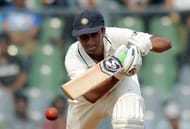
We judge talent by the number of World Cups players have won. Dravid never won a World Cup, he came close in 2003 but was denied by the wrath of mighty Australians. As odd as it may sound, I think that the World Cup did not deserve Dravid.
A vocal Virat Kohli or Steve Smith is considered aggressive and labelled “passionate”. What is this hoopla about? Vocal does not mean passionate.
Dravid had passion; he had grit without the need to explicitly show it. He faced the most number of balls in cricket and was involved in the most century stands in Tests - a clear indication of his passion to survive and fight it out in the middle.
He may not be the typical in-your-face cricketer but ask Shoaib Akhtar or Steve Waugh and they will tell you how he got on their nerves.
Aggression - let’s talk about that. To open the batting willingly against the seamers of Pakistan on their own turf, now that is aggression.
Remember his legendary 180-run vigil at Kolkata? Yes, you do.
Let me rewind things a little bit. On the 1999-2000 tour Down Under, a young Dravid had a forgetful series, managing a meagre average of 15.

Barring the series against Zimbabwe, Dravid was in shambles. He had failed to reach the elusive three-figure mark in his last four Test series. Come the 2001 Border-Gavaskar Test series, the nightmare would continue for him. He managed 9 and 39 in Mumbai, being clean bowled by Warne.
At Kolkata, during India’s first innings, he was once again foxed by Warne, clean bowled again after scoring 25 runs.
Okay, now that we have put things into perspective, consider yourself to be in Dravid’s shoes and think about the negative thoughts that plague your mind, the low self-confidence, the amount of courage required to go out there and grind it out against the best bowling attack at the time and script one of the grittiest knocks in the history of Test cricket.
Now, this is aggression, not too perceptible, but enough to say that he may be down but not out yet.
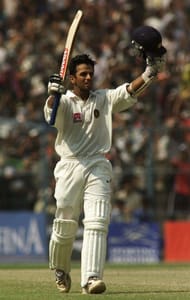
The bus doesn’t stop here, there are many tales of Dravid’s bravado. The century in South Africa in 1996-97, the knock at Leeds in 2002, the sturdy knocks in Kingston in 2006, the innings that he produced Down Under in 2003, and the taming of Pakistan’s attack in Pakistan. Like fine wine, he aged gracefully, scoring three centuries against England, finally getting his name on the coveted Lord’s board.
Dravid was never rigid; he always willing to adapt. For a player predominantly strong off his legs, he had to alter his technique so that his bat didn’t come down from gully against the quicks which had resulted in him edging the ball quite often.
To survive in ODIs, he had to re-model his game. From a player who would get bogged down, lost in his own technicalities, he turned into a player who could guarantee at least a single off every ball he faced. Now, that is something easier said than done.
Even during the latter part of his career - be it controlling his front foot movement against Mitchell Johnson or adjusting to the fast-paced nature of T20s – he was always willing to adapt. All this was made possible by one quality - passion. The passion to succeed.
Very few have enough love for the game to take up the unglamorous job of coaching the U-19 team, especially after a glittering yet taxing 16-year career at the top level.
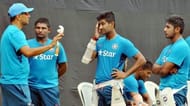
Yes, Dravid did cherish hard work. He reaped the rewards for his efforts and wouldn’t have it any other way. There were no shortcuts in his world. This is why I am sure none of us was surprised when he declined the honorary degree conferred on him as it was not something he had earned.
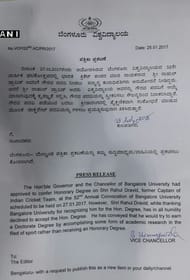
Jack of all trades
Dravid was an exceptional slip fielder, and, by his own admission, it wasn’t something that came naturally to him. He had to put in numerous hours, working with tennis balls, cork balls, leather balls, all at various speed and angles to perfect his reflexes.
He kept wickets too on many occasions so that the team balance was maintained.
As stated by him during many interviews, he didn’t particularly enjoy keeping but stuck with it because the team needed him to do so.
A perfect team player, he opened the innings whenever he was asked to without hesitation. Harsha Bhogle put it beautifully when he said, “Ask him to walk on water and he will ask, ‘How many kilometers‘?"
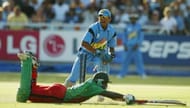
I repeat, understated but not underappreciated
And I absolutely abhor the idea that Dravid did not get the respect he deserved. That he had to play Robin to Sachin and Laxman’s batman. This is utter rubbish.
Dravid is understated but not underappreciated. Take a look at the dream Indian Test side decided by a vote online. It is a fair assumption that a vast chunk of the votes came from 90s kids - the generation that grew up watching the power-hitting of Sachin and fell in love with the fearless play of Sehwag.
Look who dominates the share of the votes. Yes, it is the skinny guy from Karnataka, Rahul Dravid, the gentleman of the Gentleman’s Game.

Thank you, Rahul Sharad Dravid! It has been an absolute pleasure watching you enrich the game.
Follow IPL Auction 2025 Live Updates, News & Biddings at Sportskeeda. Get the fastest updates on Mega-Auction and cricket news
